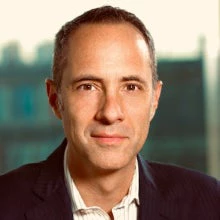At the recent first Women in Infrastructure conference in Australia, Damien Dunn—co-chair of the G20 Infrastructure Working Group and conference sponsor—paraphrased Susan B. Anthony’s famous invocation for women to “organize, agitate and educate.”
The G20 conference illustrated all three actions. It brought together government, international organization, and civil society representatives—along with women leaders from infrastructure financiers, operators, planning agencies, PPP units, and engineering firms.
One panel addressed what we need to bring women into the infrastructure workplace, from targeted outreach to whole-family education. Dr. Reiko Abe, managing director of Oriental Consultants and an important Japanese voice on gender discrimination, explained how she would bring parents of female engineers to the Mumbai Metro job site to show them that women could work safely in a construction zone.
Another panel focused on comprehensive analysis of gender norms. Allison Stewart, from the state planning authority Infrastructure Victoria, described how information about work and travel patterns of men and women determines the best locations of charging stations. With women driving a higher share of electrical vehicles, locations that followed the travel patterns of male workers would simply go unused.
Here at the World Bank, in February we initiated an ambitious program to address challenges to women working in the power sector. Hundreds of female energy-sector professionals and engineering students represented their countries at the first regional Women in Power Sector Network in South Asia (WePOWER) conference in Kathmandu. Sixty institutions—including power utilities, energy sector organizations, and multilateral agencies—agreed to undertake actions to ensure girls’ access to STEM education. They also committed to improving the recruitment, development, and retention of female managers and workers—as well as develop sound policy and analysis.
As these events took place, we’ve been preparing a new primer, the first step to address gaps between males and females in infrastructure PPPs—in employment and entrepreneurship but also in other areas like safety, mobility, and control over resources. From here, we’re well-placed to analyze what has worked, introduce standard practices, and build lessons
Gender inequality remains a stubborn feature of the structure of our economies and a hindrance to shared prosperity . This is especially true in many parts of the developing world, where women’s health and educational outcomes, access to jobs and assets, and opportunity to exercise agency over their lives are constrained.
What does this have to do with infrastructure? Can a road or a bus lane inadvertently exclude potential travelers? If power lines or water pipes could bend to the needs of consumers according to their gender, would it matter? Can decisions about infrastructure address equity and fairness, job opportunity, and equality of access?
The answers are a resounding yes and examples are powerfully clear. They include how infrastructure investments are planned, designed, constructed, and operated, but also infrastructure services’ reach, quality, and prices.
The expansion of network infrastructure—from highways to pipelines to hydropower projects—can disrupt communities. But to ensure disruption does not worsen existing power imbalances and put women at risk of harassment and violence, proper consultations and contracting mechanisms are essential. This begins in the early stages of project design and continues throughout the oversight of implementation.
We can also view infrastructure services as a potential force for good: urban transit systems and services mapped to where women work and designed to provide security can affect labor imbalances; the design and pricing of water and power systems can be adjusted for different economic circumstances of households and individuals.
What does this have to do with PPPs in particular? PPPs are unique not just because of the risk-sharing between public and private partners, but because of the embedding of performance standards as well as operations and maintenance requirements in contracts often lasting 20–30 years or more.Locking in considerations of gaps between men and women from a PPP’s outset becomes even more essential for consumers, communities, and society.
For infrastructure-development professionals—particularly those focused on crowding the private sector into infrastructure services—knowing where to start thinking about gender can pose a challenge. In many cases it requires a change in mindset, if not behavior.
We’re offering a starting point.
This primer, jointly prepared and presented by IFC’s C3P and the World Bank’s Infrastructure Finance, PPPs & Guarantees Group, seeks to:
- Ground the reader in key concepts related to gender equality and infrastructure
- Provide an understanding of how to ensure that infrastructure projects not only “do no harm” to women and men, but also create positive benefits for women
- Provide practical guidance on how to incorporate issues like women’s employment, entrepreneurship, voice, agency, and safety into projects and frameworks.
We hope that government officials from infrastructure-procuring authorities, private-sector advisors, and particularly international-development practitioners find this particularly useful.
The World Bank Group intends to continue to push the agenda in this arena—hoping that it highlights gender equity as a critical priority, sparks inspiration for PPP project teams, and opens up dialogue with a range of stakeholders.
Please reach out to us in comments below and look out for more from IFC about this topic coming shortly.
Related Posts
Holding up half the sky—and some blogs
This International Women’s Day: let’s design infrastructure better
5 ways public-private partnerships can promote gender equality
Infrastructure: Times Are a-Changin’
Examining public-private partnership projects through a gender lens




Join the Conversation